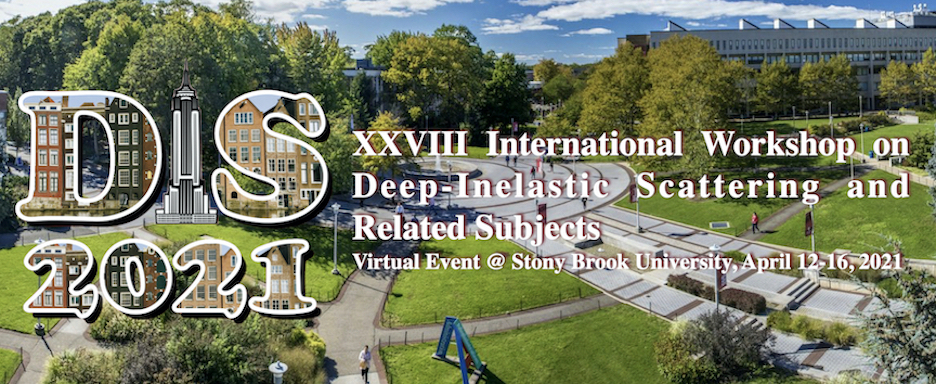Speaker
Description
In the context of the Transverse-Momentum-Dependent (TMD) description of the nucleon structure, it is important to study the distributions of the transverse-momentum squared $P_T^2$ and the amplitudes of the azimuthal modulations (azimuthal asymmetries) of charged hadrons produced in Semi-Inclusive DIS. The $P_T^2$ - distributions and the azimuthal asymmetries can be related to the intrinsic transverse momentum $k_{T}$ of the quarks; in addition, the $A_{UU}^{\cos\phi_h}$ and $A_{UU}^{\cos 2\phi_h}$ asymmetries can be used to access the still unknown Boer-Mulders TMD parton distribution function.
In 2016 and 2017, the COMPASS experiment at CERN collected a large sample of DIS events using a longitudinally polarized 160 GeV/$c$ muon beam scattering off a liquid hydrogen target. Part of the collected data has been analysed to study the $P_T^2$ - distributions and the azimuthal asymmetries $A_{UU}^{\cos\phi_h}$, $A_{UU}^{\cos 2\phi_h}$ and $A_{LU}^{\sin \phi_h}$ of charged hadrons. A new procedure has been developed to correct the results for the contamination of hadrons produced in the decay of diffractively produced vector mesons.
In this talk, preliminary results from the 2016 data will be shown for both the $P_T^2$ - distributions and the azimuthal asymmetries. The former are found to agree with the COMPASS results on deuteron, while the latter exhibit strong kinematic dependencies, as already observed in previous measurements at COMPASS and HERMES experiments with a deuteron target.

